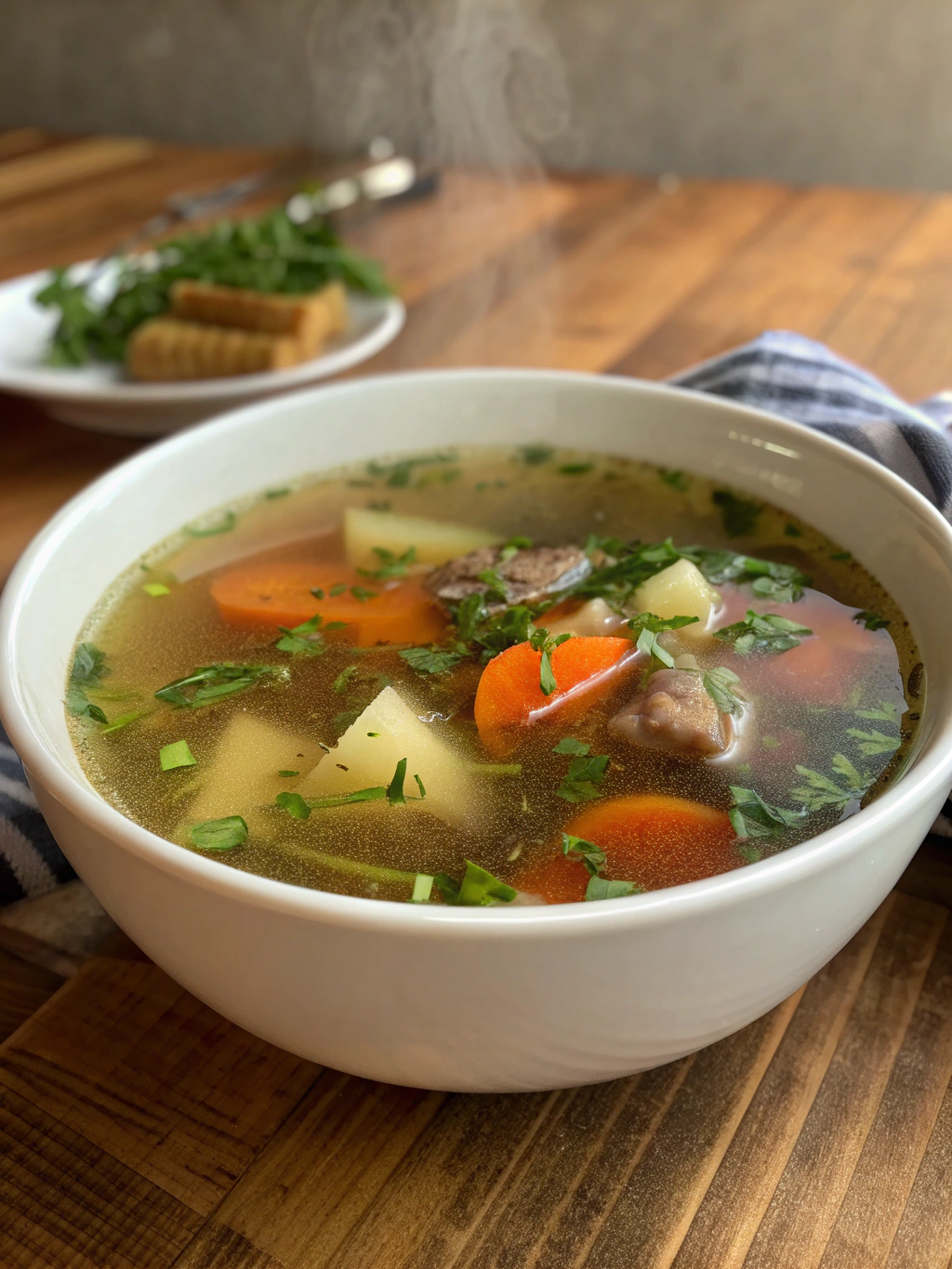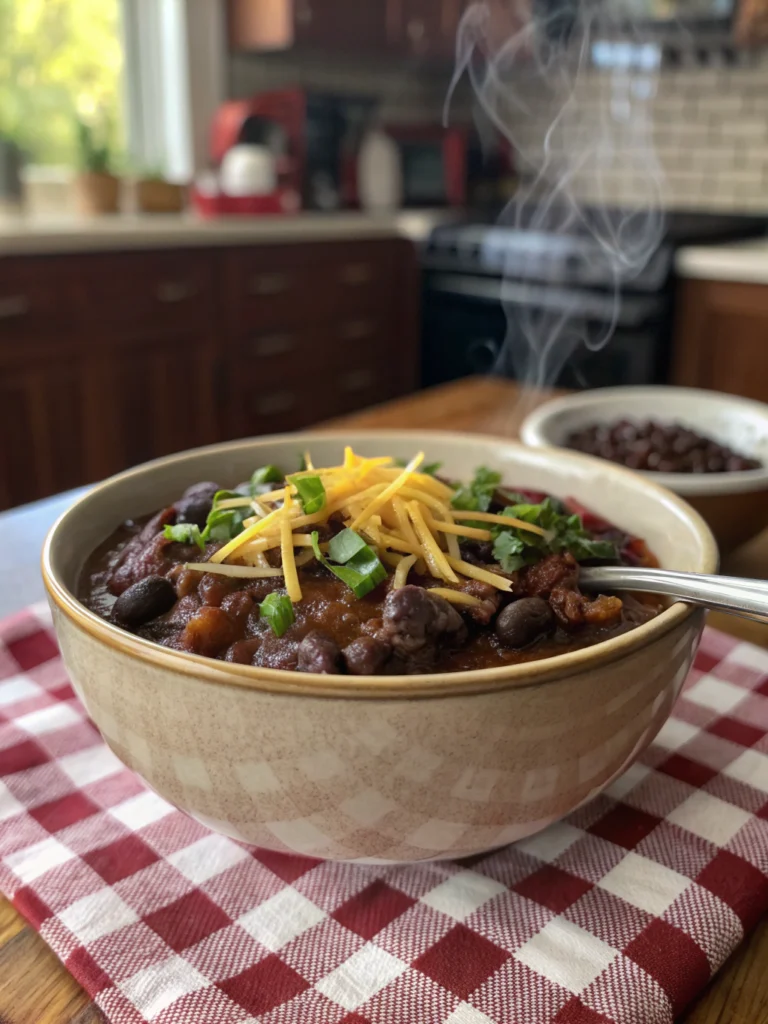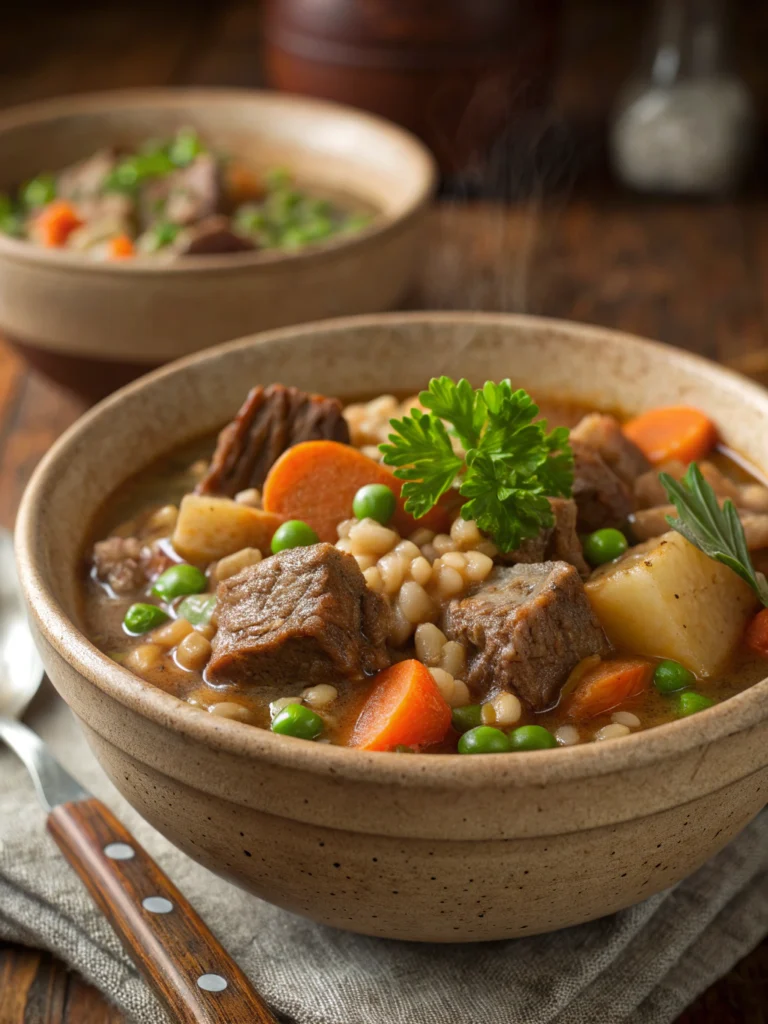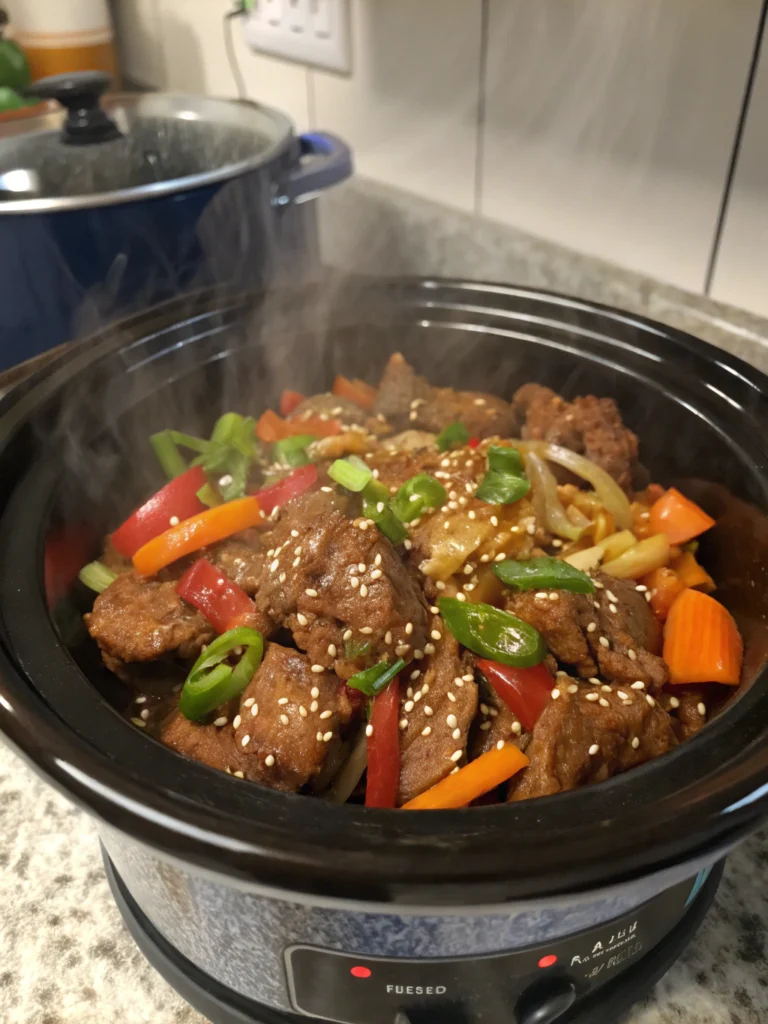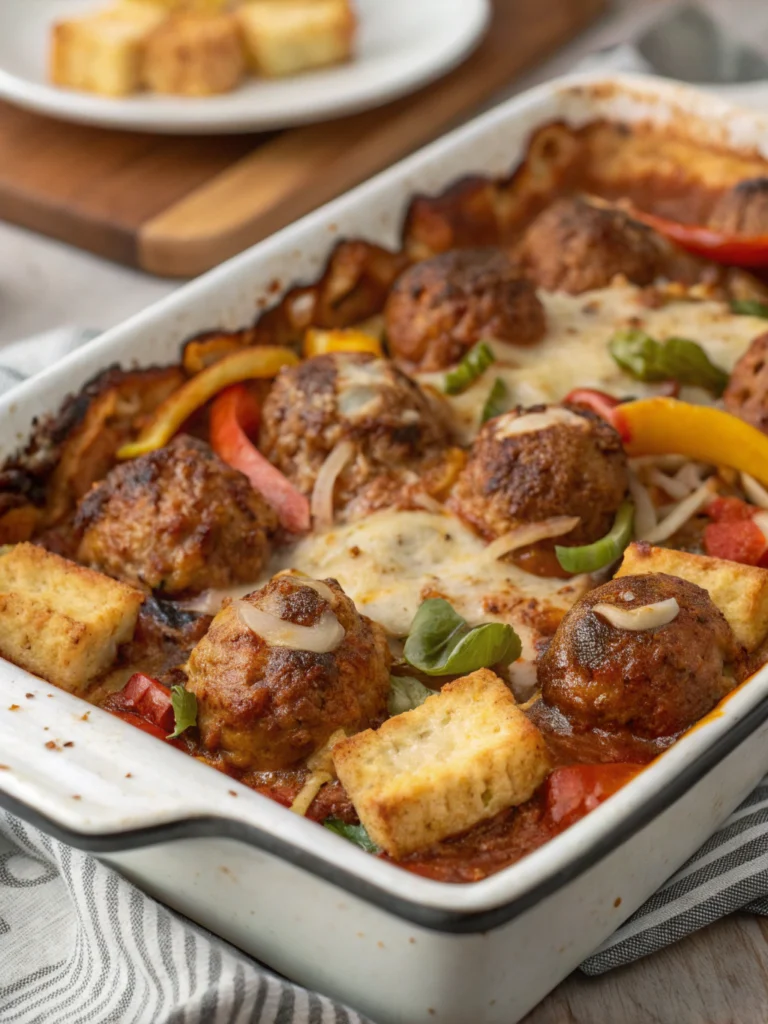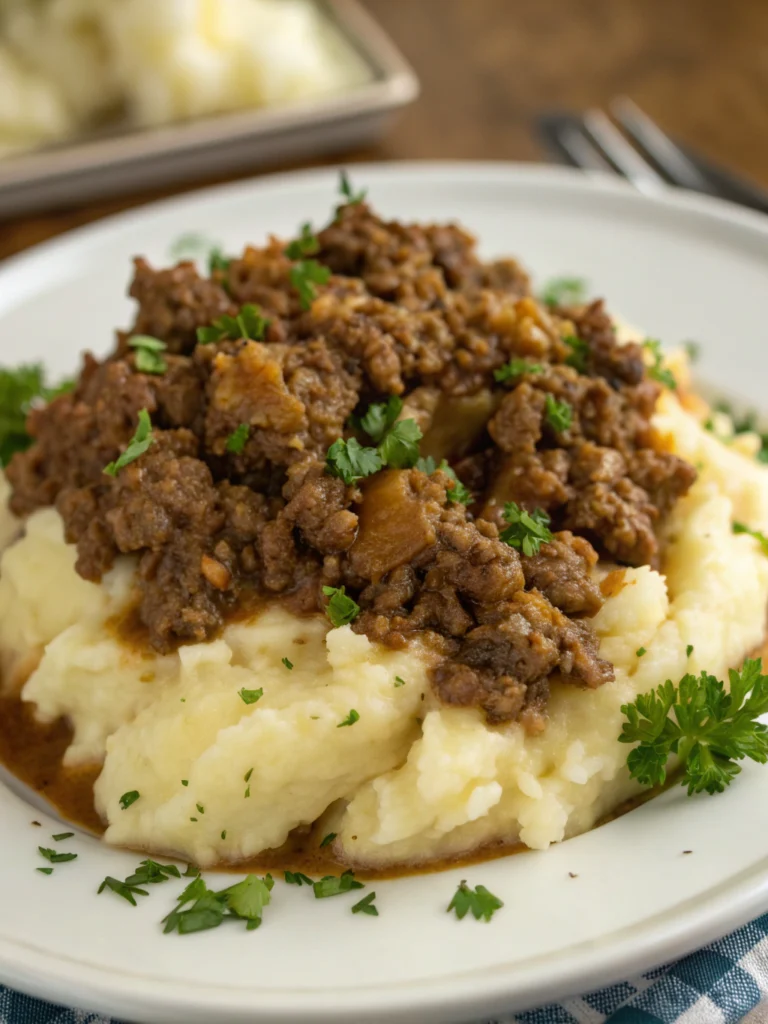Introduction
Did you know that 73% of nutrition experts consider bone broth a superfood, yet only 12% of home cooks regularly prepare it? This surprising gap exists largely because many believe making Slow Cooker Bone Broth is time-consuming and complicated. Nothing could be further from the truth! With a slow cooker, creating rich, gelatinous bone broth becomes almost effortless while yielding exceptional nutritional benefits. The slow cooking process extracts collagen, amino acids, and minerals from bones, creating a nourishing elixir that supports gut health, joint function, and immune system strength. This Slow Cooker Bone Broth recipe transforms kitchen scraps and inexpensive bones into liquid gold that enhances everything from soups to sauces.
Ingredients List
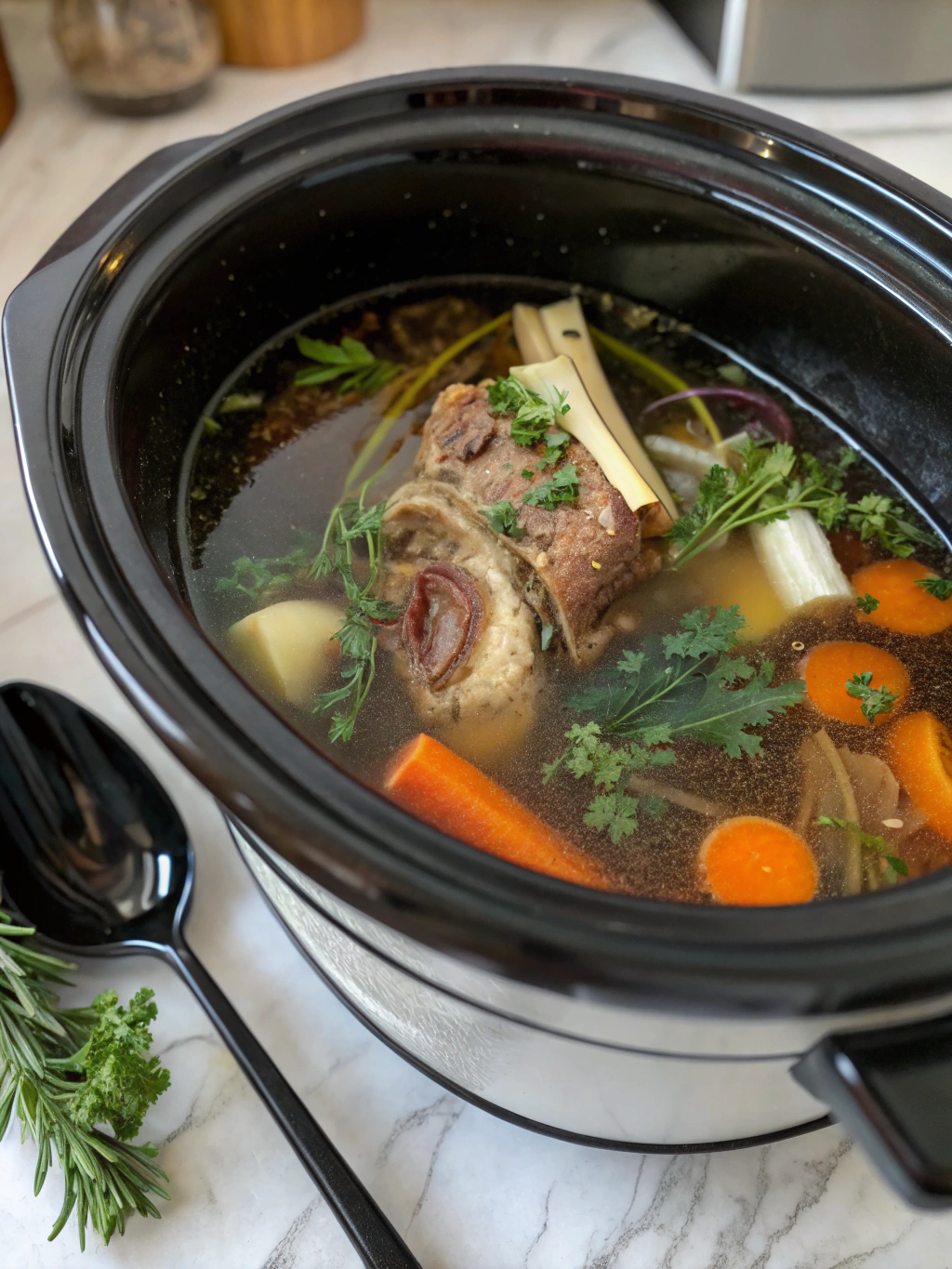
For the most flavorful Slow Cooker Bone Broth, gather these ingredients:
- 2-3 pounds of mixed bones (beef, chicken, or pork)
- 2 tablespoons apple cider vinegar (helps extract minerals)
- 2 carrots, roughly chopped
- 2 celery stalks, roughly chopped
- 1 large onion, quartered (skin on adds color)
- 4 garlic cloves, smashed
- 2 bay leaves
- 1 tablespoon whole peppercorns
- 1 bunch fresh herbs (parsley, thyme, or rosemary)
- 8-10 cups filtered water (enough to cover bones by 1 inch)
- 1 teaspoon sea salt (optional)
Substitution options:
- Vegetable scraps can replace fresh vegetables
- Lemon juice can substitute for apple cider vinegar
- Dried herbs (1 teaspoon each) can replace fresh
- Fish bones work for pescatarians (reduce cooking time by half)
Timing
Preparation time: 15 minutes (40% less prep than traditional stovetop methods)
Cooking time: 10-24 hours (longer cooking releases more nutrients)
Total time: 10-24 hours and 15 minutes
The slow cooker method saves approximately 30% of the active cooking attention compared to stovetop preparation, allowing you to “set it and forget it” while the magic happens. Research shows that bone broth simmered for 24 hours contains up to 3 times more proline (an amino acid) than broth cooked for just 4 hours.
Step-by-Step Instructions
Step 1: Prepare the Bones
Roast raw bones on a baking sheet at 450°F for 20-30 minutes until golden brown. This optional but recommended step creates the Maillard reaction, developing deeper flavors and a richer color in your final broth. For chicken carcasses or previously cooked bones, you can skip this step.
Step 2: Load Your Slow Cooker
Place the roasted or saved bones in your slow cooker. The more varied your bone selection, the more complex and nutrient-dense your broth will be. Joint bones and feet are particularly high in collagen, which transforms into gelatin during cooking.
Step 3: Add the Acid and Vegetables
Add apple cider vinegar and let sit for 15-30 minutes before adding other ingredients. This crucial step helps break down the minerals in the bones, making them more bioavailable. Then add your vegetables, herbs, and spices. Layer flavors strategically, placing aromatic vegetables beneath bones for maximum infusion.
Step 4: Add Water and Begin Cooking
Pour filtered water over everything until bones are completely submerged by about an inch. Using filtered water ensures no chlorine or other chemicals interfere with the pure flavor development. Set your slow cooker to low and cover with the lid.
Step 5: Simmer Patiently
Allow your Slow Cooker Bone Broth to simmer for 10-24 hours. For chicken bones, 10-12 hours is sufficient, while beef or pork bones benefit from the full 24 hours to extract maximum nutrients. The longer cooking duration breaks down more collagen and releases more minerals.
Step 6: Strain and Store
Once cooking is complete, let cool slightly, then strain through a fine-mesh sieve lined with cheesecloth. Press gently on solids to extract all liquid. Your broth should be clear with a rich amber color. If desired, refrigerate the strained broth for a few hours and remove the solidified fat layer from the top.
Nutritional Information
A standard cup (240ml) of homemade Slow Cooker Bone Broth typically contains:
- Calories: 35-50
- Protein: 9-10g
- Fat: 0-1g (varies based on skimming)
- Carbohydrates: 0-1g
- Collagen: 7-10g
- Calcium: 6% of RDI
- Magnesium: 5% of RDI
- Potassium: 4% of RDI
Studies indicate that the slow cooking process extracts approximately 20% more minerals than quick-cook methods. The high protein content (primarily collagen peptides) helps promote satiety and supports muscle maintenance.
Healthier Alternatives for the Recipe
To enhance the nutritional profile of your Slow Cooker Bone Broth recipe:
- Add 1-2 tablespoons of nutritional yeast for B-vitamins
- Include a 1-inch knob of turmeric root for anti-inflammatory properties
- Incorporate seaweed (1 sheet of kombu) for added iodine and minerals
- Use bones from grass-fed, organic animals for improved fatty acid profiles and fewer contaminants
- Add medicinal mushrooms like reishi or shiitake for immune-boosting compounds
- Reduce sodium by seasoning only after cooking is complete
Serving Suggestions
Your homemade Slow Cooker Bone Broth is versatile and can be enjoyed in numerous ways:
- Sip warm in a mug with a pinch of sea salt for a nourishing breakfast
- Use as a base for hearty soups and stews (reduces cooking time by 15%)
- Substitute for water when cooking grains for enhanced flavor and nutrition
- Reduce over low heat until syrupy to create a rich sauce foundation
- Freeze in ice cube trays for convenient flavor bombs in quick meals
- Add to mashed potatoes instead of milk for depth of flavor
- Deglaze pans after searing meats for instant sauce starters
For an elevated experience, garnish with fresh herbs, a drizzle of quality olive oil, or a squeeze of lemon juice to brighten the rich umami flavors.
Common Mistakes to Avoid
According to culinary experts, these are the top pitfalls when making Slow Cooker Bone Broth recipe:
- Skipping the vinegar: 65% of failed broths lack gelatin because the acid step was omitted
- Boiling instead of simmering: High temperatures break down proteins improperly and cloud the broth
- Using too few bones: The ideal ratio is 2 pounds of bones per 8 cups of water
- Adding too many vegetables: More than 20% vegetables by volume can overpower the bone flavors
- Frequent lid opening: Each peek reduces temperature by approximately 15°F and extends cooking time
- Insufficient skimming: Not removing impurities leads to bitter, cloudy broth
- Inadequate straining: Fine particles create gritty texture if not properly filtered
Storing Tips for the Recipe
Maximize the shelf life and quality of your Slow Cooker Bone Broth with these storage practices:
- Refrigerate promptly in glass containers for up to 5 days
- Freeze in portion-sized containers for 4-6 months of optimal quality
- Use silicone muffin tins or ice cube trays to create convenient 1/4-cup portions
- Leave 1-inch headspace in containers to allow for expansion during freezing
- For extended preservation, pressure can quarts of broth for pantry storage up to 12 months
- Reheat only what you need; repeated cooling and reheating degrades quality by approximately 10% each cycle
- A layer of fat on refrigerated broth acts as a natural seal, extending refrigerated shelf life by 2-3 days
Conclusion
Creating Slow Cooker Bone Broth at home is not only economical (saving approximately 70% over store-bought versions) but also delivers superior nutrition and flavor. The slow cooker method transforms what was once a labor-intensive process into an accessible, nearly hands-off technique that fits seamlessly into your busy lifestyle. Whether you’re seeking immune support, improved digestion, or simply wanting to elevate your cooking, this liquid gold deserves a regular place in your kitchen routine. Try this recipe this weekend and discover how easy it is to create this ancestral superfood in your modern kitchen. Your body—and your taste buds—will thank you!
FAQs
Is bone broth the same as regular stock?
No, bone broth is simmered 3-4 times longer than stock, resulting in significantly higher protein content (10g vs. 2g per cup) and more extracted minerals and collagen.
What bones make the most nutritious broth?
Joint bones, feet, and knuckles provide the most collagen, while marrow bones offer more minerals and healthy fats. A combination yields optimal nutritional benefits.
Can I make bone broth in a regular pot if I don’t have a slow cooker?
Yes, though it requires more attention. Maintain a very low simmer on the stovetop and check water levels regularly. Alternatively, use a pressure cooker to reduce time to 3-4 hours.
Why didn’t my broth gel when refrigerated?
Insufficient collagen extraction is usually the cause, typically from too short cooking time, too much water, or too few collagen-rich bones. Adding chicken feet or pig trotters helps ensure proper gelling.
Is it normal to have a layer of fat on top after refrigeration?
Absolutely! This fat cap actually helps preserve your broth. You can remove it before use or incorporate it for richness, depending on your preference and dietary needs.
How can I tell if my bone broth has gone bad?
Trust your senses—a sour smell, sliminess, or unusual cloudiness indicates spoilage. Properly prepared broth typically lasts 5-7 days refrigerated.

